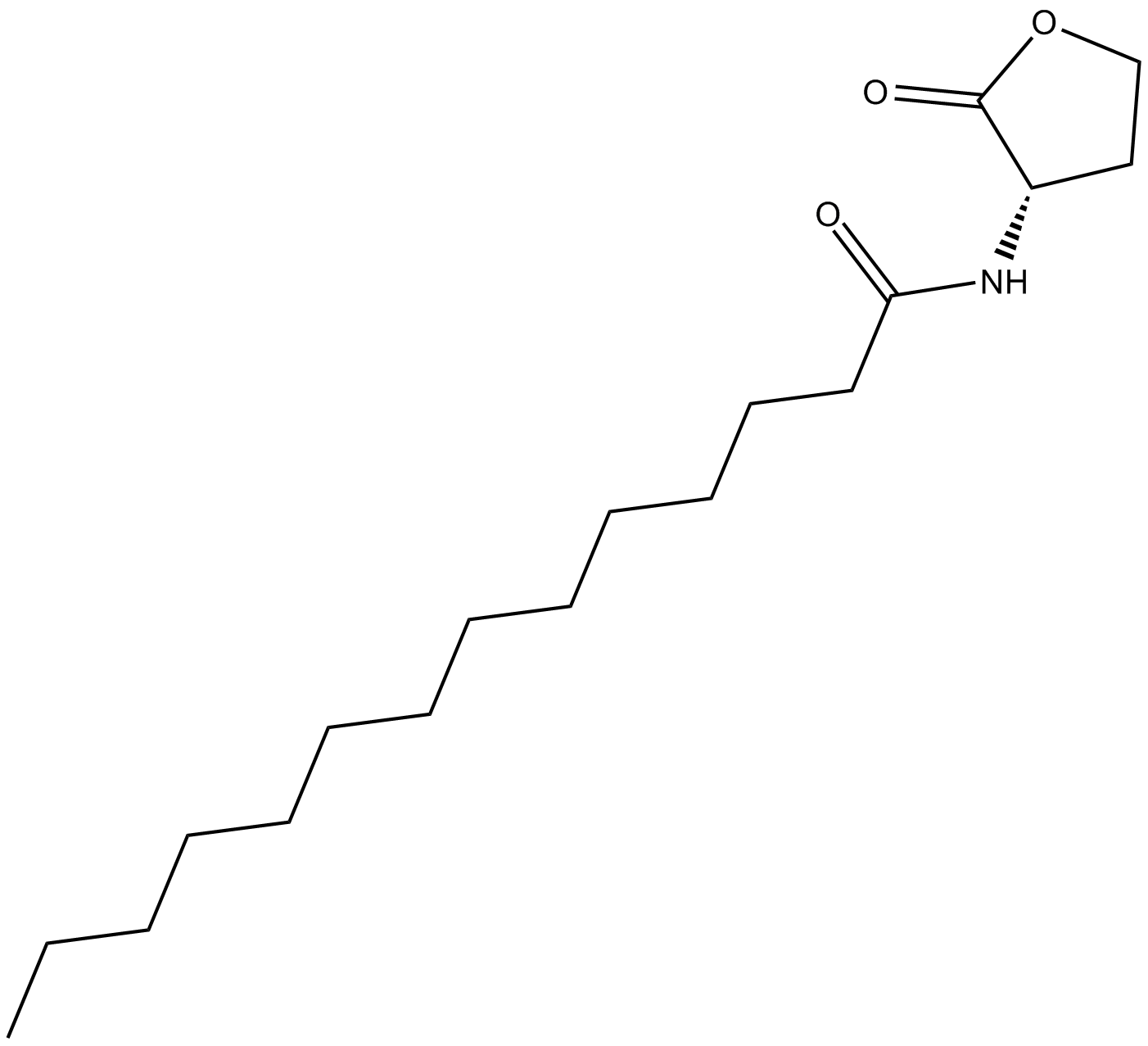N-tetradecanoyl-L-Homoserine lactone (Synonyms: C14-HSL, tDHL) |
| Catalog No.GC19513 |
Quorum sensing is a regulatory system used by bacteria for controlling gene expression in response to increasing cell density
Products are for research use only. Not for human use. We do not sell to patients.

Cas No.: 202284-87-5
Sample solution is provided at 25 µL, 10mM.
Quorum sensing is a regulatory system used by bacteria for controlling gene expression in response to increasing cell density. Controlling bacterial infections by quenching their quorum sensing systems is a promising field of study. The expression of specific target genes, such as transcriptional regulators belonging to the LuxR family of proteins, is coordinated by the synthesis of diffusible acylhomoserine lactone (AHL) molecules. N-tetradecanoyl-L-Homoserine lactone (C14-HSL) is a small diffusible signaling molecule involved in quorum sensing, thereby controlling gene expression and affecting cellular metabolism in bacteria.[1],[2],[3] It appears later than shorter acyl chain AHLs in developing biofilms[4] and, like other long chain AHLs, stimulates bacterial growth.[5] C14-HSL also alters the proteolytic activity and enhances the migration of some strains of Proteus mirabilis.[6]
Reference:
[1]. Kuo, A., Blough, N.V., and Dunlap, P.V. Multiple N-acyl-L-homoserine lactone autoinducers of luminescence in the marine symbiotic bacterium Vibrio fischeri Journal of Bacteriology 176(24), 7558-7565 (1994).
[2]. Lithgow, J.K., Wilkinson, A., Hardman, A., et al. The regulatory locus cinRI in Rhizobium leguminosarum controls a network of quorum-sensing loci Molecular Microbiology 37(1), 81-97 (2000).
[3]. McClean, K.H., Winson, M.K., Fish, L., et al. Quorum-sensing and Chromobacterium violaceum: Exploitation of violacein production and inhibition for the detection of N-acylhomoserine lactones Microbiology 143, 3703-3711 (1997).
[4]. Huang, Y.L., Ki, J.S., Lee, O.O., et al. Evidence for the dynamics of acyl homoserine lactone and AHL-producing bacteria during subtidal biofilm formation ISME Journal 1-9 (2008).
[5]. Huang, J.J., Han, J.I., Zhang, L.H., et al. Utilization of acyl-homoserine lactone quorum signals for growth by a soil pseudomonad and Pseudomonas aeruginosa PAO1 Applied and Environmental Microbiology 69(10), 5941-5949 (2003).
[6]. Stankowska, D., Kwinkowski, M., and Kaca, W. Quantification of Proteus mirabilis virulence factors and modulation by acylated homoserine lactones Journal of Microbiology, Immunology, and Infection 41, 243-253 (2008).
Average Rating: 5 (Based on Reviews and 9 reference(s) in Google Scholar.)
GLPBIO products are for RESEARCH USE ONLY. Please make sure your review or question is research based.
Required fields are marked with *




















